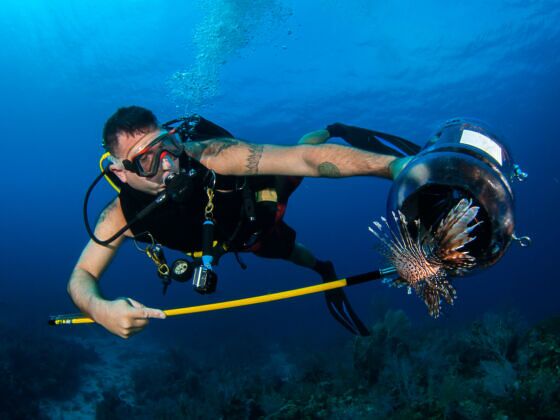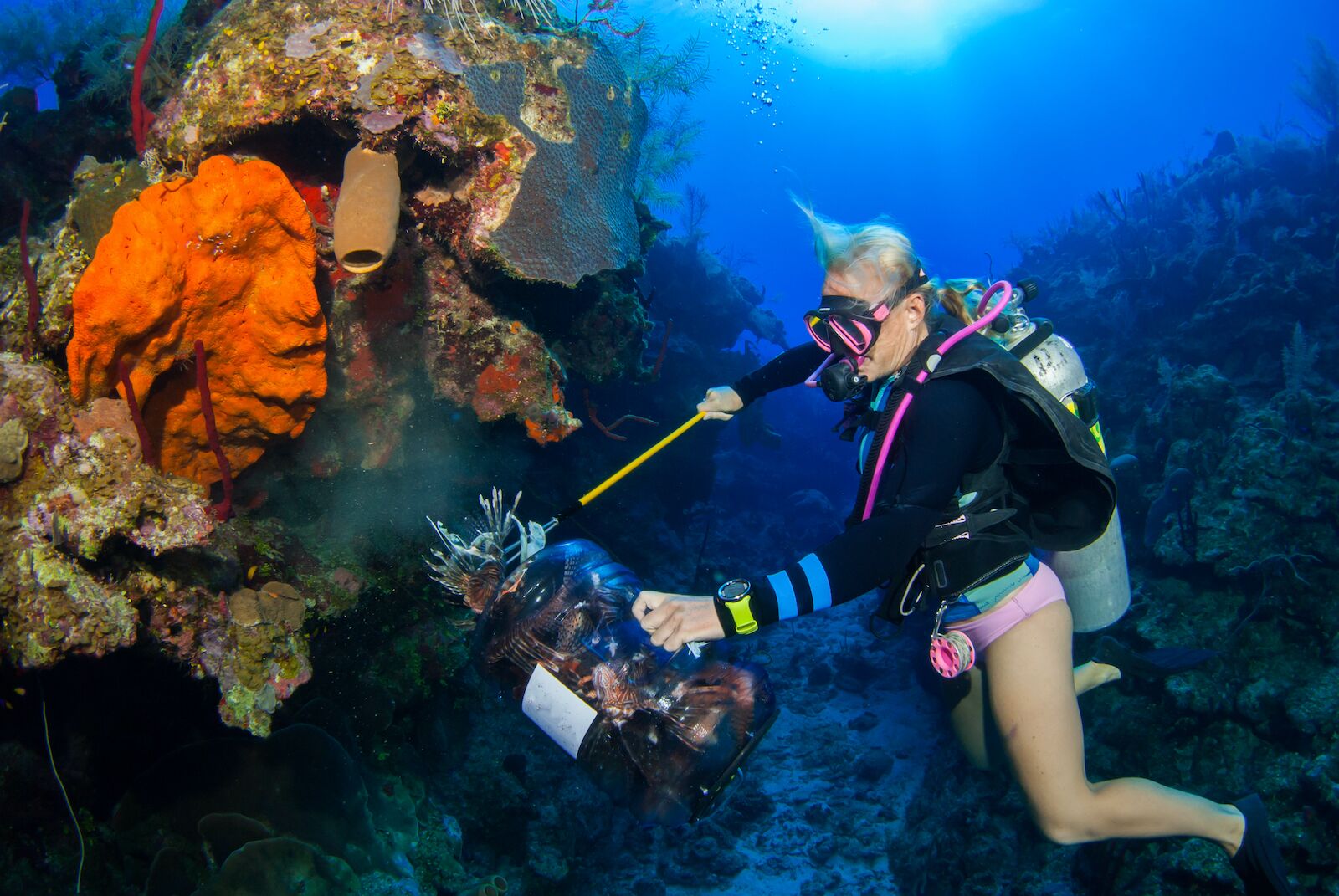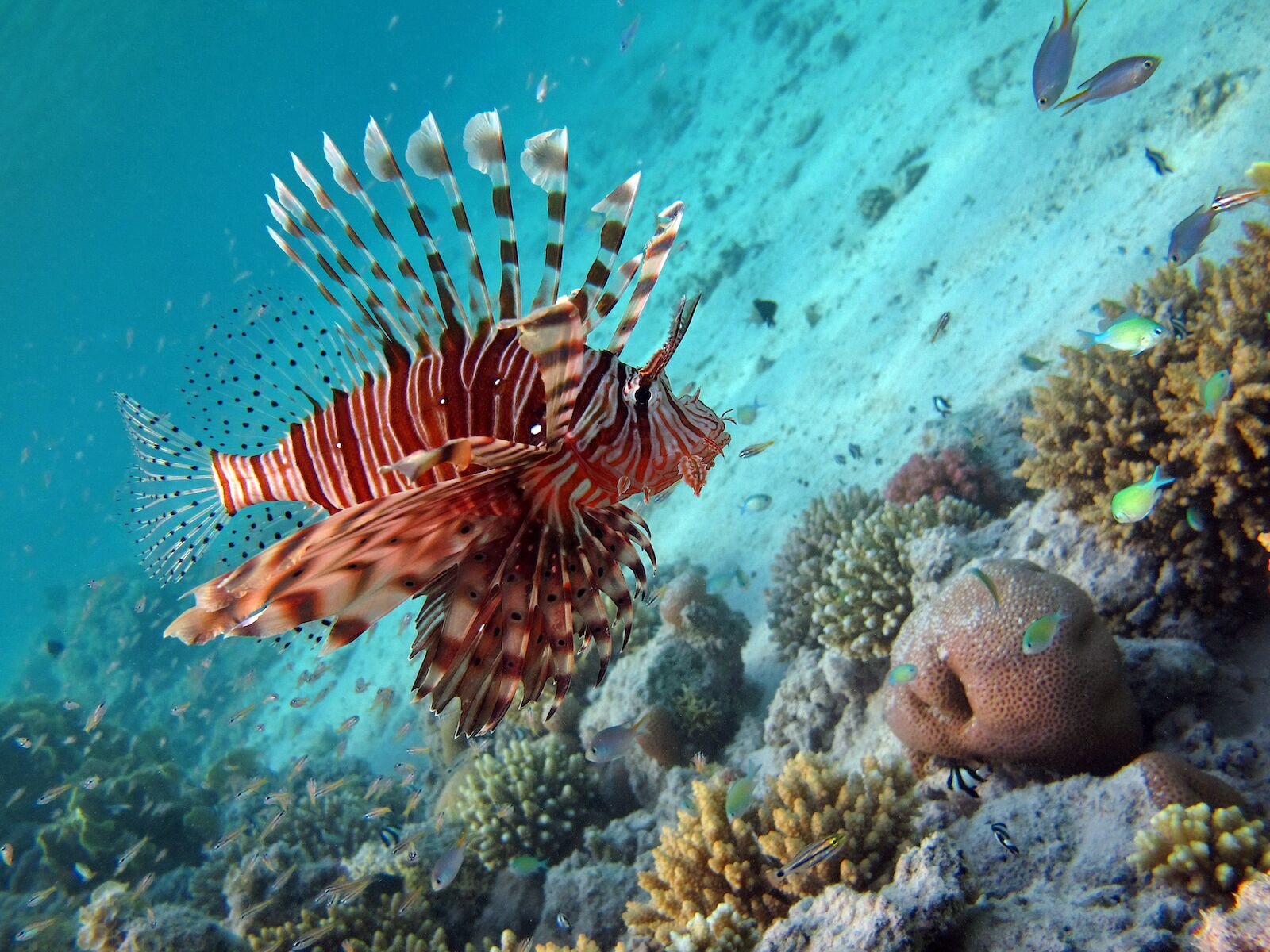The words “hunting” and “conservation” are rarely used in concert. But in the case of venomous, voracious, and virulent lionfish, marine conservationists say the hunt is on.
Native to the South Pacific and Indian Oceans, lionfish are an invasive species in the Western Atlantic Ocean, Gulf of Mexico, and Caribbean Sea whose overwhelming proliferation is considered one of the greatest ecological threats the Atlantic has ever seen. How they got there is not entirely clear. One theory pins the escape of six captive lionfish into Florida’s Biscayne Bay on Hurricane Andrew in 1992. A more popular theory blames aquarium owners for releasing lionfish into Floridian waters where they were first spotted as far back as 1985.



